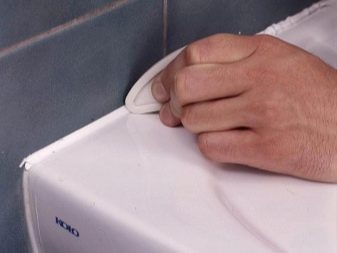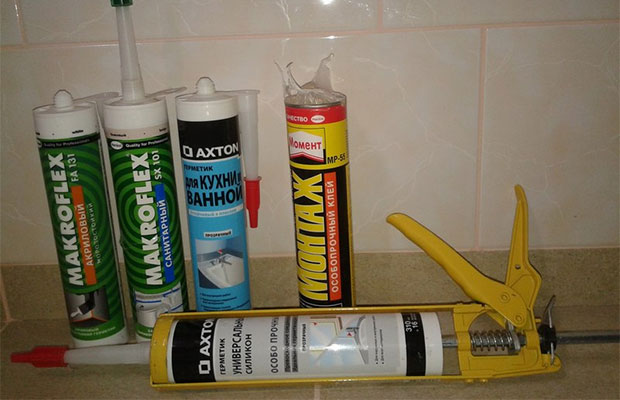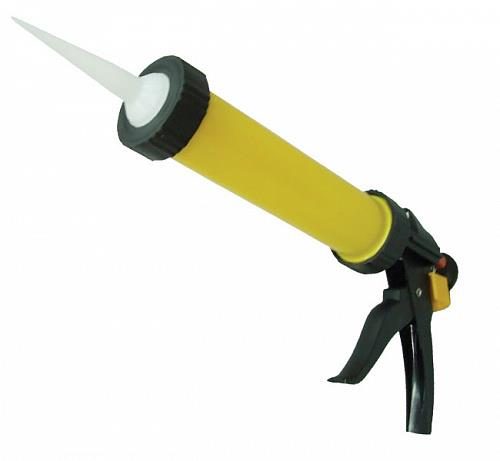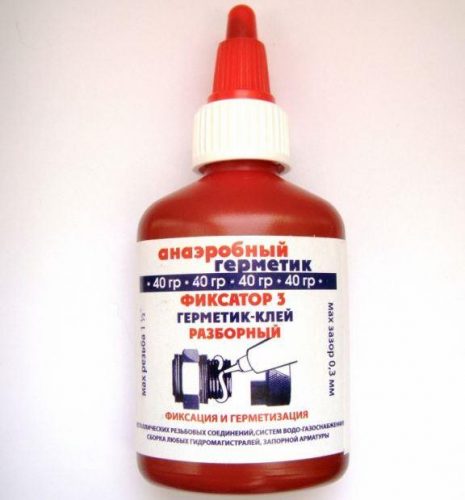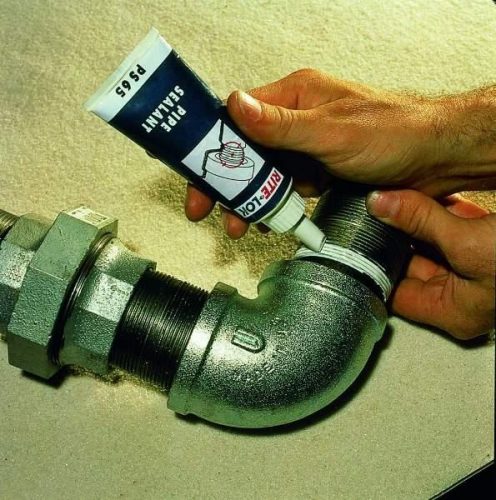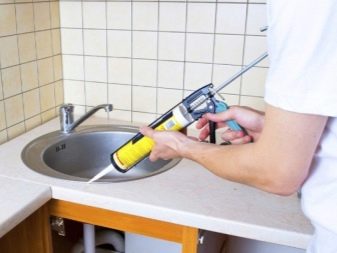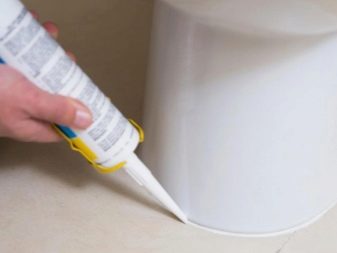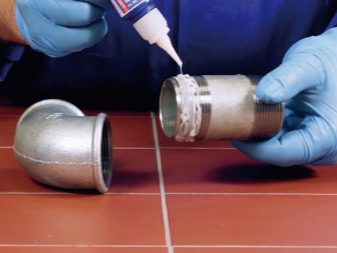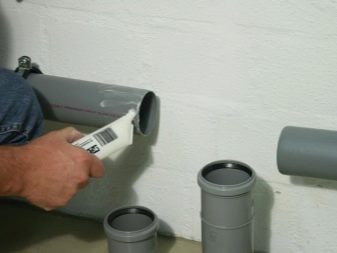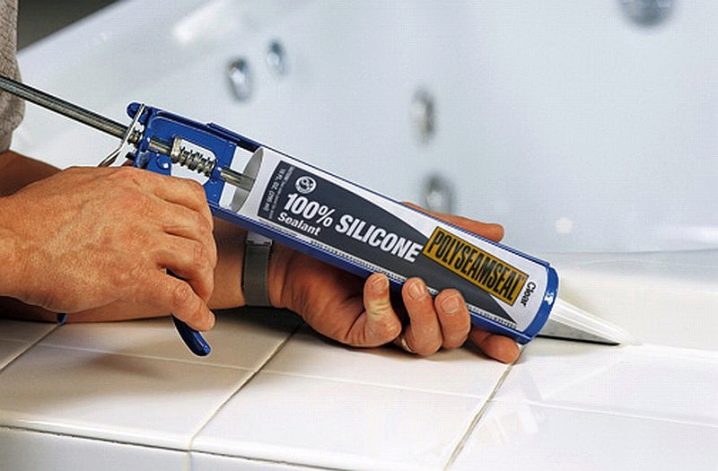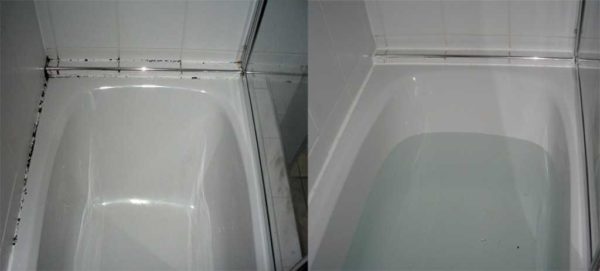Polyurethane
Polyurethane sealants are good for outdoor use. They are not afraid of changes in temperature and humidity, they tolerate ultraviolet radiation well. They can work on open or closed, but not heated balconies and loggias. Also, their properties are in demand in wet areas - bathroom, toilet and kitchen. The main advantage is that they have a very good adhesive ability, for which they are also called glue-sealant.
Polyurethane compounds are good for everyone, but have poor adhesion to plastics
Properties and scope
Polyurethane-based sealants can be used outdoors and can be applied in sub-zero temperatures (down to -10°C). And this is their main difference from others. They also have the following properties:
Elasticity after drying.
Water resistance.
No shrinkage during drying (no deformation and cracks in the seam, it remains airtight).
Adheres well to brick, concrete, stone, glass, metals, wood, etc.).
Many compositions after drying can be painted.
There are also colorless compounds. The seam is more accurate
There are also disadvantages. The first is poor adhesion to plastics, resulting in poor joint strength. The second one cannot be used in areas of elevated temperatures (heating above +120°C is prohibited). Third - should be applied to dry surfaces (humidity not higher than 10%!) (MISSING). When applied to wet materials, a primer is required.
The low adhesion to plastics limits the use of polyurethane sealants in the bathroom. They are good for sealing the junction of a steel or cast iron bathtub with a wall, porcelain or glass sink. But you should not use them to install an acrylic bathtub or shower cabin - the seams can leak.
Manufacturers, brands, prices
Polyurethane bathroom sealant compared to acrylic is a better choice. It remains flexible and does not crack. When compared with silicones, it is definitely difficult to say which is better. The advantage of silicones is that they “stick” well even to plastics, and polyurethane compounds that they are odorless.
| Name | Colors | Special properties | Surface film formation | Release form and volume | Price |
|---|---|---|---|---|---|
| BOSTIK PU 2638 | white, grey, black, brown | high adhesive power | 45 min | Tube for pistol 300 ml | 230 rub |
| POLYFLEX-LM low modulus | White gray | UV and water resistant, do not use on glass | 15 minutes | Tube for pistol 310 ml | 280 rub |
| POLYURETHANE 50FC | White | quick-drying, suitable for gluing plastics, corrosion-resistant steel | 10 min | Tube for pistol 310 ml | 240 rub |
| MACROFLEX PA124 | White | resistant to water, weak acid solutions | 25 min | Tube for pistol 300 ml | 280 rub |
| SOUDAFLEX 40FC | white, grey, black | absorbs and dampens vibration | 15 minutes | Tube for pistol 300 ml | 290 rub |
This type of sealing compounds refers more to general construction. Many compounds are ideal for sealing interpanel joints in multi-storey buildings and for other similar work. Bathroom sealant is one use case.
How to apply
Before applying any sealant directly to the desired section of the pipe, it should be carefully prepared. Usually the surface is cleaned of old paint or rust with a brush with metal bristles. It is also recommended to degrease the area with a small amount of gasoline. After that, you can already apply the sealant itself. If silicone tape is used, then it is wound around the threaded connection, and if any liquid sealant is used, then it is applied to the area using a special cylinder gun
It is important to remember about safety and not to touch the fresh layer of the composition with unprotected hands, because some may contain acid. To form seams, it is best to use a spatula and work with gloves.
Different formulations take different times to dry. After an average of 20 minutes, the silicone sealant begins to harden.
Composition and features of operation
The basis of this plastic material is silicon, it is from it that the silicone polymer is obtained. This seems unusual, because we are used to seeing silicon in the form of a solid rock. In addition, the composition usually includes at least 4 more types of additives. The main difference between the sealant for plumbing connections is the presence of a fungicide. This component provides an antiseptic effect and prevents mold.
Organic extenders are responsible for reducing viscosity, and thanks to mechanical fillers, for example, quartz or glass dust, chalk and others, adhesion improves. If it is necessary to obtain a certain color, then special dyes are introduced. The fact is that most silicones do not stain after curing, so you should take care of the color scheme even at the production stage. In general, the properties of this sealant largely depend on the ratio of the above components.
It is worth saying a little about the features of operation. If the composition includes a small amount of organic substances, then it is possible to give color to the frozen seam only with special dyes. After opening the package, the substance does not lose its properties for several days, if you close the tube - for example, you can plug the hole with a match.
It is rather problematic to work with narrow plates made of polyethylene, polypropylene, polycarbonate, PVC and fluoroplastic, since in this case adhesion will be insufficient. And for interaction with wet surfaces, only a limited range of compositions is suitable at all. And yet, oddly enough, but many plumbing silicone sealants do not interact well with acrylic. In contact with synthetic materials, lead, zinc and copper, toxic fumes can be released, so be careful and be sure to read the attached instructions before use.
2
In what forms is the sealant produced?
Most liquid sealants are available in special plastic tubes with a volume of 310 ml. Tubes up to 100 ml are in demand - for processing small areas. The tube is convenient in that it is equipped with a special piston, like a syringe. It can be loaded into a construction gun, which is also used for mounting foams. With it, it is easy to squeeze out the right amount of silicone. If the material is not completely used, then the hole in the package is plugged with an ordinary match so that it does not dry out inside.
Standard release form - 310 ml tube
For more extensive work with pipes, plumbing sealants are available in large and soft file bags with a volume of 600 ml. For their use, pistols of a different type are used, the principle is the same as in a syringe. When choosing the right volume, try to calculate the area to be processed as accurately as possible.
Sealant selection
Maximum sealing when assembling sewer, heating or plumbing systems can only be achieved by using the right sealant.
For the assembly of pipelines, two types of sealants are used:
Silicone sealants
At the heart of silicone sealant is silicone rubber, to which are added:
- compositions to increase adhesion;
- compositions to increase strength;
- impurities to accelerate vulcanization.
Sealing compound based on silicone
The advantages of silicone-based sealants are:
ease of use. The sealing material is applied to the surface of the pipe with a special gun or squeezed out by hand (small packages of material);
Easy sealant applicator
- durability. Due to such qualities as elasticity, excellent adhesion, resistance to deformation, water resistance and heat resistance, the service life of silicone sealant is 15 - 20 years;
- wide scope.Silicone-based sealants can be used in the assembly of pipelines from various types of pipes. The sealing composition is suitable for the construction of an internal or external pipeline, as the sealant is resistant to aggressive media and direct exposure to sunlight.
Among the disadvantages of the sealing material can be noted:
- seams treated with sealant cannot be coated with paint, since its composition negatively affects the sealant, reducing the period of operation;
- it is not recommended to use a sealant during the construction of a pipeline in cold weather, since the low temperature regime significantly reduces the vulcanization (hardening) period of the composition;
- sealant must not be used on pipes larger than 4 inches (100 mm) in diameter.
Silicone sealants, depending on the chemical composition, can be:
- acidic. This type of sealing composition is not suitable for sealing pipes made of non-ferrous metals, as a chemical reaction occurs between the materials;
- neutral.
Acrylic sealants
For sealing pipes for water supply, heating, and so on, a separate type of acrylic sealant is most often used - anaerobic.
Anaerobic sealant is used for sealing threaded connections. When contact with metal, the sealant hardens. The final polymerization of the substance, which gives strength to the junction, is carried out after the assembly of the pipeline system assembly without air access.
Sealing compound for threaded connections
The advantages of anaerobic sealant for heating systems, sewerage, water supply and so on are:
ease of use. The sealing composition is applied to the thread (flange connection) without the use of additional devices;
- resistance to vibration, which allows extending the service life of the threaded connection by 4-5 years;
- resistance to high temperatures and high pressure;
- no need to use additional sealing materials;
- additional protection of the metal surface of the thread from corrosion.
However, this type of sealant has its drawbacks, which include:
- Can only be used on metal surfaces. For plastic pipes connected to a socket, such a composition will not work;
- dismantling difficulty. If a specific section of pipeline needs to be replaced, then preheating will be required to separate the pipes and remove the sealant;
- the possibility of using sealant for pipes whose diameter does not exceed 8 cm;
- high price.
Depending on the strength of the resulting joint, all anaerobic sealants are divided into three groups:
- standard strength. The composition is used in the manufacture of a pipeline with low pressure and not subject to vibration;
- medium strength. Such a sealant is used for the construction of a pipeline with average operating parameters;
- increased strength. Used to seal joints under high pressure and do not require constant dismantling.
When choosing an anaerobic sealant, it is also worth considering the composition of the mixture and the diameter of the pipes, which may vary depending on the product line or manufacturer.
Properties
Plumbing silicone sealants are recommended for use during plumbing installation work. When assembling pipes, it is best to immediately use a sealant on the threaded connections of the pipes, since they are most often subject to leakage. The main types of sealants have such positive properties as:
most compounds adhere very strongly to various surfaces; a wide range of applications - there are universal sealants that can be used for any plumbing (sink, toilet,pipes); sealants easily tolerate large temperature differences; they are resistant to ultraviolet rays, except for self-adhesive tape; the compositions are very plastic; sealants have a long service life; they prevent the appearance of mold and various harmful fungi.
Among the negative properties of sealants, it is worth noting the high toxicity of some compounds that can be harmful to humans. They are able to spoil objects in the interior, for example, tiles on the floor or wall. Such problems can be avoided if you work with the composition carefully and in protection, and some material should be laid on the floor and walls.
Which bathroom sealant is best
It is necessary to choose the type of sealant for specific tasks. Then you can choose the optimal properties. For example, for sealing a bathtub or shower enclosure to a wall, an MS polymer-based sealant is the best choice. Not bad - silicone and polyurethane. But they must have antibacterial additives.
Neutral silicone sealant is excellent for gluing mirrors. Any silicone (it can also be acidic) is coated with sections of countertops, edges and sections of furniture that is installed in the bathroom or in the kitchen.
If you need to glue fallen tiles in the bathroom, a polyurethane compound or with MS polymers will do. Due to the high adhesive power, they immediately fix the product in place. Since the compositions do not shrink when dried, there is also no risk of damaging the tile.
The main problem is blackening from the fungus. Solved by the presence of antibacterial additives
If you need a bathroom sealant to seal pipe joints, you need to look at the material from which they are made. For pipes made of steel and cast iron, neutral silicone, polyurethane and MS polymers are suitable. It is better not to use polyurethane for plastic and metal-plastic, and any silicone compounds are suitable.
When decorating a bathroom in a wooden house, the walls are usually sheathed with moisture-resistant drywall. But since the house constantly “plays” in height, there is a gap between the ceiling and the plasterboard - to compensate for these changes. So that moisture does not get there, it must be filled with something, but at the same time the seam remains elastic. Silicone and MS polymer formulations can also be used for these purposes.
To solve the problem with blackening of the seams, it is necessary to choose compositions with antibacterial additives. There are also special sanitary sealants. They are so named precisely because of the presence of additives against fungi and mold. Sealers for aquariums are also suitable for this purpose. They have excellent adhesion to most materials and never blacken.
As you can see, for each type of work, the best bathroom sealant is different, but the most versatile is based on MS polymers.


